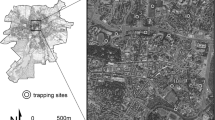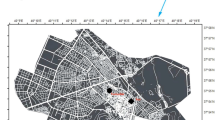Summary
From these results it appears that a hot, humid environment can be used to study the physiological reactions of desert dwellers, and to compare them with the reactions of other populations, without introducing any significant errors.
Similar content being viewed by others
References
Eichna, L. W., W. F. Ashe, N. B. Bean, andW. B. Shelley: The upper limits of environmental heat and humidity tolerated by acclimatized men working in hot environments. J. industr. Hyg.27, 59–83 (1945).
Hodgson, T.: The design, construction and performance of a portable climatic chamber. Proc. Symp. Human Adaptability and its methodology; Ed.H. Yoshimura, andJ. S. Weiner, pp. 103–114. Tokyo: Jap. Soc. Prom. Sci. 1966.
Minich, S.: An inexpensive hot room. J. appl. Physiol.15, 1154–1155 (1960).
Wyndham, C. H., N. B. Strydom, J. F. Morrison, C. G. Williams, G. A. G. Bredell, M. J. E. von Rahden, L. D. Holdsworth, C. H. van Graan, andA. J. van Rensburg: Heat reactions of Caucasians and Bantu in South Africa. J. appl. Physiol.19, 607–612 (1964).
Author information
Authors and Affiliations
Rights and permissions
About this article
Cite this article
Wyndham, C.H., Strydom, N.B., van Graan, C.H. et al. Physiological reactions of desert bushmen in hot, dry and hot, humid conditions. Int. Z. Angew. Physiol. Einschl. Arbeitsphysiol. 24, 315–319 (1967). https://doi.org/10.1007/BF00698206
Received:
Issue Date:
DOI: https://doi.org/10.1007/BF00698206




